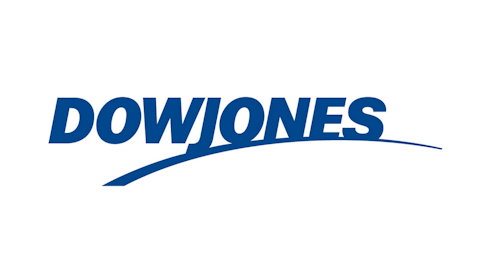The stock price of Netflix, Inc. (NASDAQ:NFLX) has been very volatile in the last 6-7 months. Shares of the video streaming giant has come a long way from the $50 region in October 2012 to their current price of more than $180. With a good list of original content to be unveiled in 2013, the company’s stock has a lot of drama left in them. A look at Netflix’s SWOT is warranted to see the possible strategic shifts that might take place in the near future.
Strengths
First Mover Advantage:
Netflix, Inc. (NASDAQ:NFLX) has successfully managed to make the most of its first mover status, and secured the leading position in the Internet TV market. It now has more than 33.3 million global subscribers for streaming alone. It uniquely positions the company above Hulu Plus which has roughly 3 million paying users for streaming, and also above Amazon.com, Inc. (NASDAQ:AMZN) which has an estimated 5 million to 10 million subscribers.

Unique Value Proposition: Netflix’s value proposition to end users is pretty simple; a low fixed price and unlimited viewing from its large content collection. Due to the low cost nature of Netflix, Inc. (NASDAQ:NFLX)’s business model, its customers are a lot more likely to drop their cable connection (i.e. cord cutting) and keep their “over-the-top” subscription. Netflix can be viewed from most devices with an Internet connection. Also, Netflix doesn’t have any commercial interruptions unlike its rival, Disney-backed, Hulu.
Size of Content Library:
Netflix has arguably the largest content library among all the online video streaming companies. Its content collection of an estimated 60,000+ titles is substantially greater than Amazon.com, Inc. (NASDAQ:AMZN)‘s 38,000 titles for Prime, and also bigger than Hulu’s content library. It has struck a number of exclusive content deals with big studios like Disney. And the management intends to sign more exclusive content deals, which will appeal to more users, and result in newer subscriptions.
Weaknesses
Virtuous Cycle Might End: Netflix, Inc. (NASDAQ:NFLX)’s revenue model has been described as a virtuous cycle, i.e. license large amounts of content and then attract new subscribers, and this cycle goes on. The large amount of content obligations and the expansion in international markets are being funded by debt which also enhances the credit risk of the company.
DVD Segment: The famed red envelopes of Netflix are on the decline, as customers are increasingly inclined towards consuming movies and TV Shows via the Internet and not via DVD. As a result, streaming members are increasing, and DVD consumers are on a sequential decline, a trend that is likely to continue. In 2012, Netflix, Inc. (NASDAQ:NFLX) lost ~3.0 million subscribers in the DVD business. To make matters worse, the DVD segment has a much higher contribution margin compared to the streaming business.
Price Conscious Consumers:
A sizable number of Netflix customers have been sensitive about pricing as demonstrated in Netflix’s large increase in the churn rate in 2011. Even though Netflix has a rather low price point, the entry of competitors like Coinstar, Inc. (NASDAQ:CSTR) and Verizon Communications Inc. (NYSE:VZ)’s offering of Redbox Instant, and Amazon.com, Inc. (NASDAQ:AMZN)’s Prime Instant will prevent Netflix from increasing the price of its streaming service down the road.
Opportunities
International Markets: Netflix’s biggest opportunities lie in the international segments. Netflix invested heavily across Europe especially in the Nordic region, which should aid in increasing its subscriber base. Also, Netflix is increasingly tapping into the Latin America region as the addressable market in the region is huge, and the company is working with regional banks to improve payment collections. The 6.1 million subscribers in the International segment should gain traction, as more consumers adopt Internet TV.
Original Content:
The production of content available on only Netflix represents a big opportunity for the company as original content delights Netflix’s current customers, and brings in newer ones. Producing original content aids in enhancing Netflix’s brand value and creates significant publicity and word-of-mouth marketing. This trend can be seen in its marketing expenses, which have gone down substantially in the last 4 quarters and in Q4 2012 stood at 12.4% of sales. As a result, Netflix can substitute some of its marketing budget to produce more original shows. Netflix will be releasing a few original shows in 2013.
Secular Forces:
The increased adoption of Internet connected devices by consumers for media consumption aids substantially in adding more subscribers. Accessing Netflix is increasingly becoming easier as Netflix buttons are being placed on Smart TVs. Increased tablet sales and internet penetration in many regions across the world will provide additional tailwinds for adding subscribers.
Threats
Content Prices: Netflix is facing inflated content prices as it will be looking to sign more exclusive content deals. Increased competition among streaming companies will also lead to higher prices, as they outbid each other. Netflix’s debt load is also increasing due to this content price inflation. And also, the front-loaded cash payments stemming from the production of original content are also pushing Netflix to take out more debt as well.
Competitive Environment:
Competition in the Internet streaming space is intensifying with the entry of Coinstar, Inc. (NASDAQ:CSTR)’s Redbox Instant which not only has the same price point as Netflix, but also offers 4 DVDs that are redeemable at various Redbox Kiosks across the country. In addition, the existing competitors including HBO Go, Amazon.com, Inc. (NASDAQ:AMZN) and Hulu all have decent offerings and good subscriber bases as well. However, Netflix’s streaming product offering is still the market leader by a big margin.
The bottom line
Netflix is the dominant player in the video streaming space, and will likely be able to overcome near-term headwinds. Smaller losses from the International segment in the next few quarters, along with some good original content releases might serve as catalysts. However, the current valuation seems to have factored in the near-optimism for the stock.
The article Netflix: A SWOT Analysis originally appeared on Fool.com and is written by Ishfaque Faruk.
Copyright © 1995 – 2013 The Motley Fool, LLC. All rights reserved. The Motley Fool has a disclosure policy.





